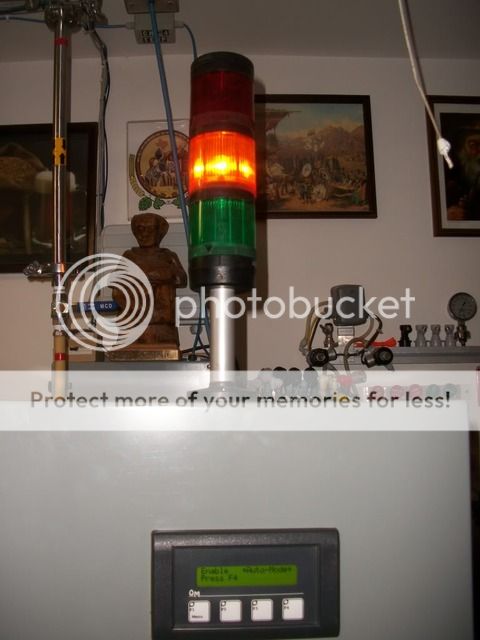- Joined
- Feb 11, 2008
- Messages
- 97
- Reaction score
- 0
I just got my hands on an Allen Bradley 855T-B10TL stack light. It has green, red and blue 120V LED lights. Problem is I have no idea how to wire it, and the instruction manual I found online does not give me much help.
I was hoping one of the gurus here may be able to help me. As long as I know if it is safe to use with regular 120V service, I should be able to play with it enough to make it function the way I hope.
I have 30A service coming into my control panel and would like the green light to show power on. The red and the blue would show the elements working and I was hoping to wire the light after the ssr like you would a normal LED indicator.
Anyone ever worked with something like this? The links to the product page and catalog page are below.
http://www.ab.com/signaling/towerlights/855t.html
http://www.ab.com/en/epub/catalogs/12768/229240/229246/2531107/229856/
Thanks for the help,
Scott
I was hoping one of the gurus here may be able to help me. As long as I know if it is safe to use with regular 120V service, I should be able to play with it enough to make it function the way I hope.
I have 30A service coming into my control panel and would like the green light to show power on. The red and the blue would show the elements working and I was hoping to wire the light after the ssr like you would a normal LED indicator.
Anyone ever worked with something like this? The links to the product page and catalog page are below.
http://www.ab.com/signaling/towerlights/855t.html
http://www.ab.com/en/epub/catalogs/12768/229240/229246/2531107/229856/
Thanks for the help,
Scott






















































![Craft A Brew - Safale S-04 Dry Yeast - Fermentis - English Ale Dry Yeast - For English and American Ales and Hard Apple Ciders - Ingredients for Home Brewing - Beer Making Supplies - [1 Pack]](https://m.media-amazon.com/images/I/41fVGNh6JfL._SL500_.jpg)






